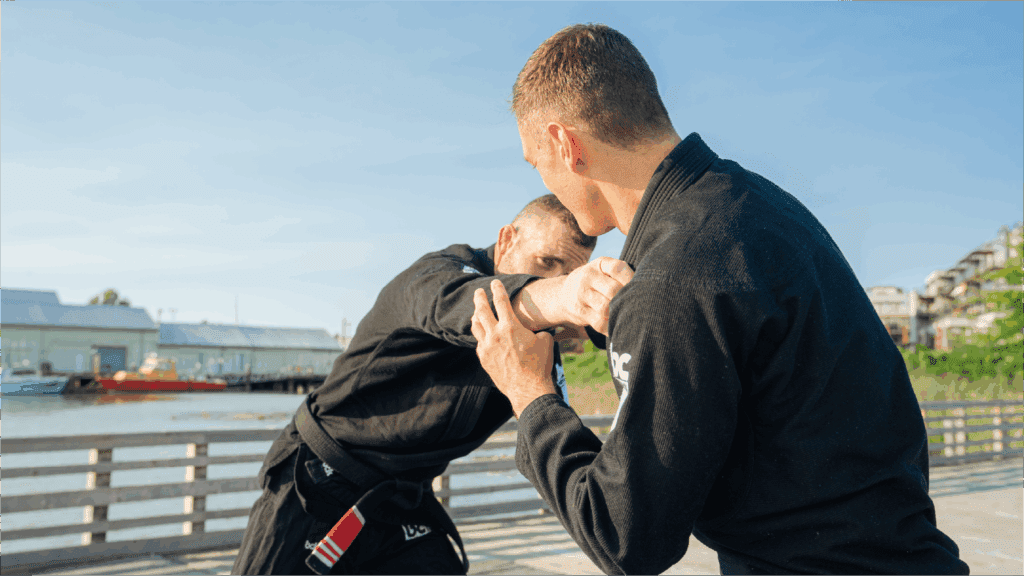One question we get asked all the time here at Advantage is “What kind of training practices do you use?” So, we’ve put together a simple and easy-to-understand guide to answer this question, below!
What is drilling?
This is when you are working with a non-resisting opponent to become familiar with a skill set or technique. Certain movements feel awkward at first and this allows time to work on the details of the position so you are ready for specific training. This only needs to be done until you are familiar with the movements of the position.
What is specific training?
Specific training is working on specific techniques or skill sets with live resistance. The idea here is to take a position you want to improve and spend time training in that position to find out what works, and what doesn’t. Narrowing down the variables makes Jiu-Jitsu less complicated and allows you to learn at a faster rate. Your opponent’s resistance offers immediate feedback so you can test your ideas.
For example, you may want to improve your closed guard, so with a resisting opponent, you start from the closed guard with a clear objective in mind. Perhaps you want to work on your arm bar from closed guard. In regular sparring, you may or may not have the opportunity to do so. The advantage of specific training is that you will have a clearly defined time to work on a specific technique or skill. You will be able to see how different people react in these positions and what obstacles you need to overcome to achieve your goal. Often during this specific training, you will notice you are missing some details (grips, pressure, head position, etc) that you will have time to correct and try again.
Specific training provides realistic feedback on how well you can execute a technique under pressure.
What is hyper-specific training?
This is taking specific training one step further. Using the same example above of working on your armbar from closed guard, this can prove to be a tall order against a game opponent. Instead, you could begin with a top lock (legs trapped over your opponent’s shoulder) and begin training from there. Once you find success in reaching the submission you could increase the difficulty by taking a step back and trying from there. Starting closer to the end position will increase the chance of success which is what you want to build from to gain confidence in the position. As your confidence grows gradually increase the difficulty by starting further away from the goal you want to achieve.
What is rolling?
This is regular live rolling. This is an opportunity to simulate a match with a defined rule set and practice your whole game as a whole. Coming to class with a plan of what techniques you want to work on, and then forcing the match to that area is a great way to develop your technique realistically. Other times, you may want to put yourself in bad positions to try and see how you could defend yourself and turn things around. If you have a tournament coming up you may have the goal of submission without giving up any points along the way.
How intense should I roll?
This is one of the things most beginners struggle with. This depends on whom you are rolling with and what both of your goals are. Generally speaking, you should not be rolling at 100% to reduce the chance of injury for yourself and your partner. If you require using all of your strength chances are you need to improve your technique, rather than compensating with muscle.
Most people at the gym are coming because they enjoy the sport and want to improve while staying fit and active. Look to match the intensity of your training partner, and if things become too intense, let them know or talk with your coach. Perhaps you have a competition coming up and you want to have an intense match, let your partner know beforehand so that they are in agreement and not blindsided by the intensity.
The other side of this is not being intense enough. It can become a bad habit to give up a sweep, and if your goal is to become better for a competition you will want to create good habits and give up as few points as possible.
In the gym, we should always give our partners ample time to tap for submission, especially joint locks. Both training partners have an important role to play here. If you are applying the submission, do so in a slow controlled fashion and if your partner refuses to tap take the time to educate them
What does high-level technical rolling look like?
What about defense?
It is extremely important to work on your escapes and defense in various positions. It is important to train your weaknesses. Listen to Roger Gracie, one of the greatest of all time’s thoughts on this subject here:
One way to help practice defense is another variation of positional sparring. We have borrowed this idea from John Danaher who typically runs his class in the following way.
After the technique portion of the class the sparring rounds are split as follows:
Round 1: Mount
Top position goal is to submit. Transitions are fine provided you are still in a dominant position. IE: Taking the back would not end the round. The bottom position goal is to sweep or return to a full guard. Half guard is not sufficient. If either partner achieves their goal the role is switched.
Round 2: Turtle
Top Position is to submit. Transitions are fine provided you are still in a dominant position. The bottom position goal is to sweep or return to full guard. Half guard is not sufficient.
Round 3: Closed Guard
Top Position is looking to pass. If they pass the roles are switched. The bottom position is looking for a sweep or submission if either is achieved then the roles are reversed.
Round 4-6: Standup or Seated Vs Standing
This is an opportunity to tie it all together and spend some specific time on your takedowns.
This increases your exposure to both offense and defense in some of the core positions of jiu-jitsu. If you are a higher belt you may not have to work from the bottom of the mount often. If and when it does, you should know what you need to do to survive and escape the position. These positional rounds will allow you to practice these positions.
Jon Thomas has some ideas on this concept which can be watched here:
At Advantage Jiu Jitsu we strive to be efficient with our training methodologies so you can improve quickly. Come try a class and experience it for yourself!
Get Started with Jiu Jitsu
If you’re looking to get into Jiu Jitsu, or you’d like to come try out a class, we’d love to have you! Check out our what to expect page, and book your first class FREE!




